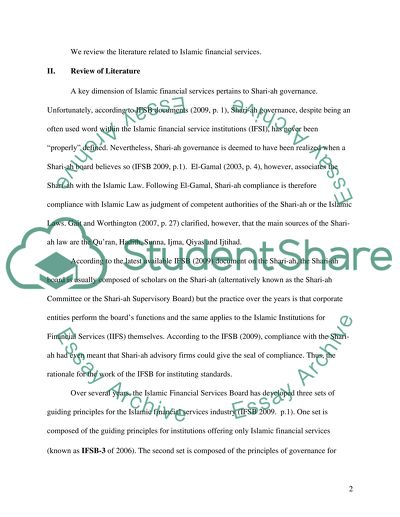Cite this document
(Islamic Financial Engineering and Prospects for Addressing the Credit Crunch Research Proposal Example | Topics and Well Written Essays - 1500 words, n.d.)
Islamic Financial Engineering and Prospects for Addressing the Credit Crunch Research Proposal Example | Topics and Well Written Essays - 1500 words. https://studentshare.org/finance-accounting/1568459-comparison-between-financial-engineering-and-islamic-financial-engineering-and-is-financial-engineering-support-the-banks-and-financial-company-in-the-credit-crunch
Islamic Financial Engineering and Prospects for Addressing the Credit Crunch Research Proposal Example | Topics and Well Written Essays - 1500 words. https://studentshare.org/finance-accounting/1568459-comparison-between-financial-engineering-and-islamic-financial-engineering-and-is-financial-engineering-support-the-banks-and-financial-company-in-the-credit-crunch
(Islamic Financial Engineering and Prospects for Addressing the Credit Crunch Research Proposal Example | Topics and Well Written Essays - 1500 Words)
Islamic Financial Engineering and Prospects for Addressing the Credit Crunch Research Proposal Example | Topics and Well Written Essays - 1500 Words. https://studentshare.org/finance-accounting/1568459-comparison-between-financial-engineering-and-islamic-financial-engineering-and-is-financial-engineering-support-the-banks-and-financial-company-in-the-credit-crunch.
Islamic Financial Engineering and Prospects for Addressing the Credit Crunch Research Proposal Example | Topics and Well Written Essays - 1500 Words. https://studentshare.org/finance-accounting/1568459-comparison-between-financial-engineering-and-islamic-financial-engineering-and-is-financial-engineering-support-the-banks-and-financial-company-in-the-credit-crunch.
“Islamic Financial Engineering and Prospects for Addressing the Credit Crunch Research Proposal Example | Topics and Well Written Essays - 1500 Words”. https://studentshare.org/finance-accounting/1568459-comparison-between-financial-engineering-and-islamic-financial-engineering-and-is-financial-engineering-support-the-banks-and-financial-company-in-the-credit-crunch.


